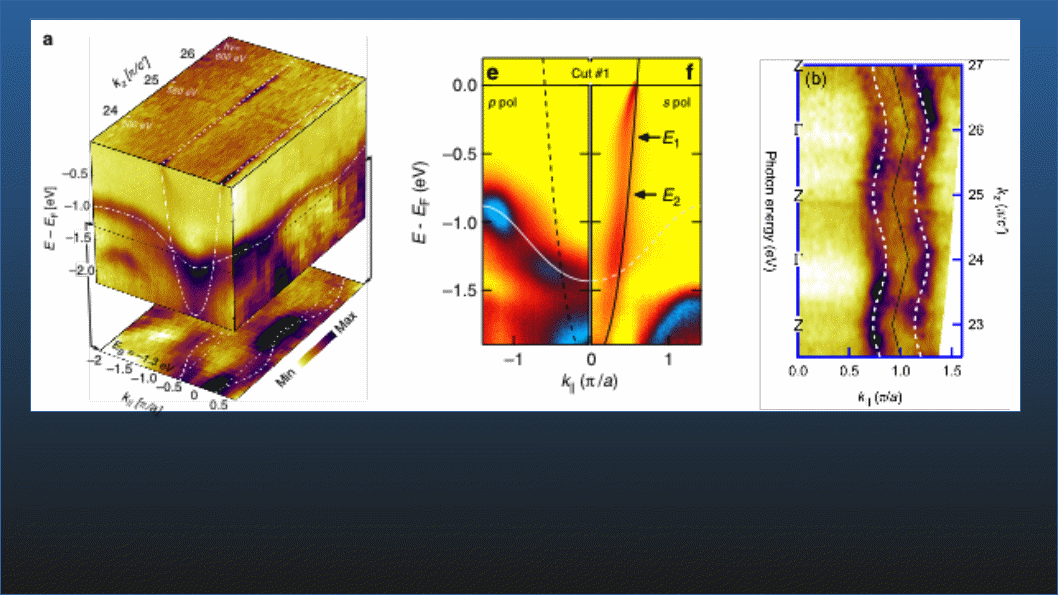The results have important implications for superconductivity and pseudogaps in cuprates, and even the existence of type-II Dirac fermions in oxides.
A sequence of ARPES experiments on superconducting cuprates have been carried out at the SIS and ADRESS instruments at the Swiss Light Source. The first study identified the dz2 band in overdoped La2-xSrxCuO4 and revealed the existence of an antinodal hybridization gap between the dx2-y2 and dz2 bands. As a direct consequence, orbital hybridization must exist at the Fermi level. This orbital distilled condition is unfavorable for superconductivity. The study thus identified one of the limiting parameters for the critical transition temperature of superconductivity [1]. In a second study, it was demonstrated how the hybridization gap, imposed by symmetry, is closing along the nodal Cu-Cu bond direction. This structure constitutes the first experimental realization of 2D type-II Dirac Fermions [2]. Finally, as a consequence of the dz band’s proximity to the Fermi level, a pronounced Fermi surface kz warping was detected directly by soft x-ray ARPES. Mapping out the full three-dimensional Fermi surface had implications for the pseudo-gap problem. With the observed kz warping it is no-longer possible to interpret the specific heat enhancements through a van-Hove singularity scenario. Therefore, pseudo gap quantum criticality was put forward as the most plausible scenario [3].
[1] C. Matt et al., Nature Communications 9, 972 (2018)
[2] M. Horio et al., Nature Communications 9, 3252 (2018)
[3] M. Horio et al., Physical Review Letters 121, 77004 (2018)
